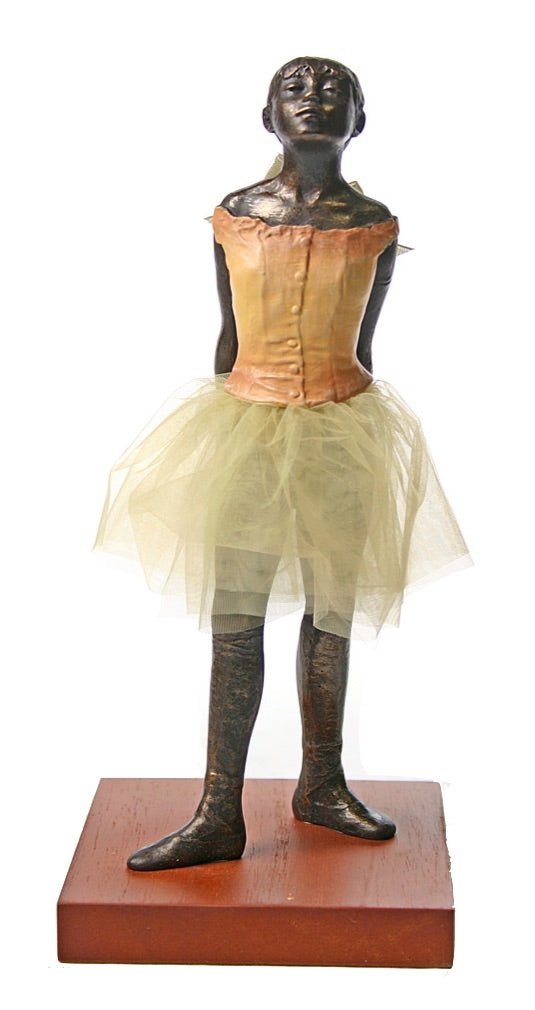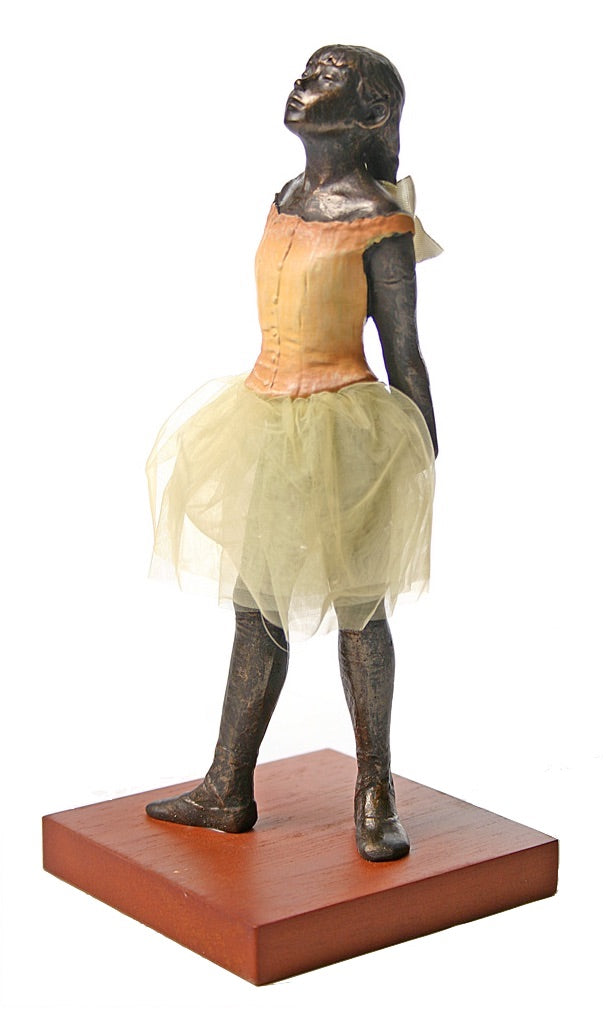Parastone
Degas Little Dancer of Fourteen Years Ballerina Ballet Fabric Tutu by Parastone 8.5H
Degas Little Dancer of Fourteen Years Ballerina Ballet Fabric Tutu by Parastone 8.5H
SKU:DE05
In stock
Couldn't load pickup availability
Item Specifics
Item Specifics
- Dimensions (in): 8 1/2 in H x 3 1/4 in W x 3 1/4 in D
- Weight: 0.9 lb
- Material: Resin with hand-painted color details
- Item type: statue
- UPC or EAN: 8717202554768
The Fourteen-year-old Dancer (Petite Danseuse De Quatorze Ans, 1879-1881), Edgar Degas' beloved sculpture of a young ballerina. She has an actual fabric skirt and ribbon bow in her hair.
Part of the Parastone Museum Collection. Comes with a color card in four languages describing the original artwork.
Measures: 8 1/2 in H x 3 1/4 in W x 3 1/4 in D. Weighs 1 lb.
ABOUT THE ARTWORK: After beginning to lose his eyesight after his fiftieth birthday, Degas became increasingly dependent on his sense of touch and so started to turn from painting to sculpting. Although during the last period of his life he hardly ever showed his work to anybody, he decided after working the Dancer for than two years, to send his work to the impressionist exhibition in Paris.
After he had carefully sculpted the body, he had the clothes custom made: the bodice, the net dancing skirt and the ballet shoes. On top of the bodice he then worked again with wax, so this was to become a solid part of the figure when it was cast in bronze. He expected a sympathetic reaction from the audience, but they were at an utter loss. It was obviously too realistic. 'Mister Degas dreamed of an ideal picture of ugliness. The fortunate man! He has achieved it ...', a critic wrote. He was known as a painter and now he had designed something that seemed to laugh at all the traditional values of the art of sculpting, which was something the audience just could not understand.
After this experience Degas never exhibited any of his work again. Looking back, he was clearly ahead of his time and he had developed a degree of objective realism for which his contemporaries were not in the slightest prepared. It is a lifelike sculpture, with her chin lifted into the air and her immature body, the girl is standing before us, ready to start moving whilst at the same time she seems motionless and timeless -- so characteristic of the true art which outlives its time to splendidly.
EDGAR DEGAS (1834-1917): Together with Monet the founder of French Impressionism, Edgar Degas was famous for his innovative compositions in his paintings and later in his sculptures. Degas created a tremendous amount of artworks. For an example, just with his ballerina images and sculptures, the surviving artworks total more than 1,500 plus in various stages of development (sketches, prints, monotypes, paintings, drawings and sculptures). For 10 years he sketched the young women training and then reused the sketches for new artworks during the next 40 years. The early rehearsal scenes were done in oil; and in 1878, he started using pastels for his dancers, nudes and horse-track scenes.
Share






